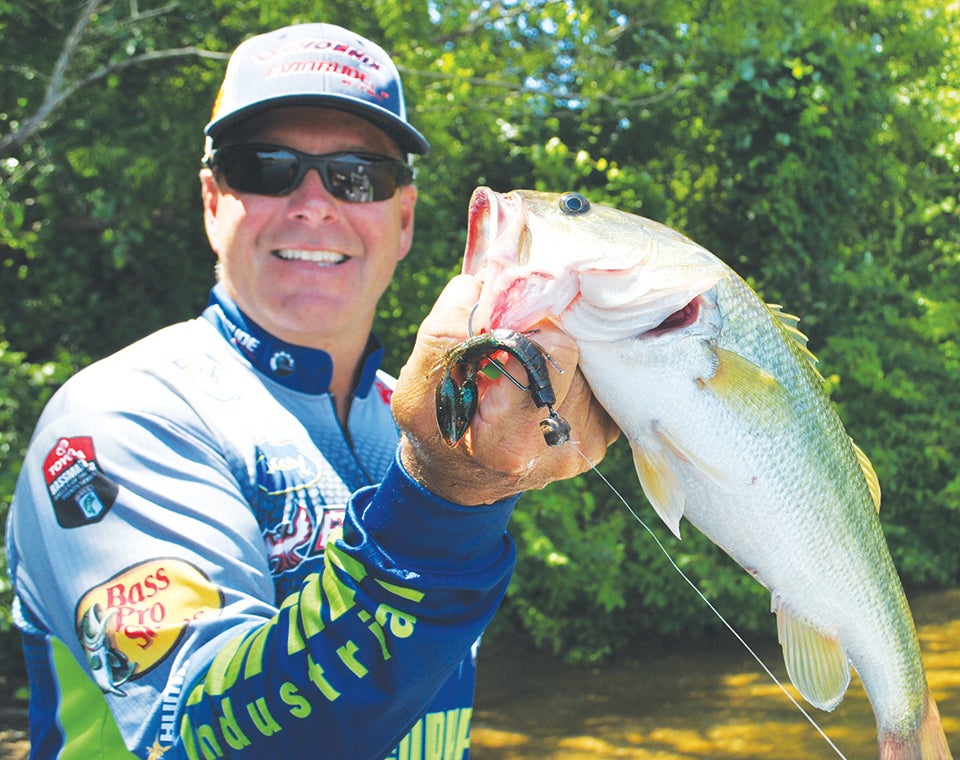February, March a good time to catch lunker bass
Published 10:13 am Thursday, February 16, 2023
|
Getting your Trinity Audio player ready...
|
 Davy Hite is one of the nation’s most decorated and celebrated pro bass fishermen. A native of Saluda, S.C., who now lives in Ninety Six, S.C., he is one of two bass pros who have won bass fishing’s triple crown – the Bassmaster Classic, FLW Tour Championship and BASS Angler of the Year award.
Davy Hite is one of the nation’s most decorated and celebrated pro bass fishermen. A native of Saluda, S.C., who now lives in Ninety Six, S.C., he is one of two bass pros who have won bass fishing’s triple crown – the Bassmaster Classic, FLW Tour Championship and BASS Angler of the Year award.
So if he worries about the average bass fisherman getting a late start on the year, there’s probably a good reason. He thinks it’s the early fisherman who gets the lunker bass – that keeping your boat in the garage until March is a huge mistake.
“I think February and March are the best months to catch your PB – personal best. They are great times to catch a big fish,” said Hite, who gave a handful of seminars at the recent Raleigh Bass and Saltwater Expo on the N.C. State Fairgrounds. “Later in the spring, when the water is warmer, the fishing will be better for numbers, but this is the perfect time of year to target those big, prespawn females.”
Hite said that the weather can be troublesome. There are as many more 30- and 40-degree days than 50-degree days – but a serious bass fisherman knows that it’s just in the cards for bass to start getting into more of a feeding mood. Bass often key on the water temperature, but not nearly as much as they key on the lengthening amount of daylight in every 24-hour period. They understand spring is on the way, and know what that means: time to replenish the species.
“Don’t plan long-term; just look out a day or two and when you can, just go,” said Hite, who starts getting serious when the surface water temperature creeps into the high 40s. Bass metabolism is still slow, but it’s starting to warm to the tests of packing on weight in a period of just a few weeks in order to be at peak health when they spawn.
“Wherever you are fishing, there can be a lot going on (in February). You will have some fish that will almost immediately be prespawn fish, who aren’t far from spawning. Those fish will be in around 5 feet of water. And then, you’ll have fish that are still deep, relating to baitfish in 20 to 40 feet of water.
“Even if the weather is cold, there will be some bass that really want to get into shallow water. The approach of spring and the spawn will make them move,” he said. “I’ve fished with snow on the ground and caught them in 5 or 6 feet of water. You can have some groups of fish on shallow flats in creeks or in flat pockets, and they can be on 45-degree banks where you’re sitting in 20 feet of water throwing to the bank.”
Hite said he starts each February fishing day trying to figure out which stage the fish are in the lake where he launches his boat. He has crankbaits and jigs tied on all the rods on his casting deck: crankbaits when he is looking for fish, and jigs when he finds them.
“When I get on a body of water I haven’t fished in a few days – or a few weeks, or maybe not for a while – I’m going to start with a crankbait, because I can search with it. I start the day out looking, putting my trolling motor down, covering water,” he said. “In February and March, I like to fish crankbaits that have a tight wobble; that’s an action that really works in relatively cold water. I am going to fish either a Shad Rap or a Rapala OG Slim. Both of them have a tight wobble and they come in different sizes; the biggest baits typically dive deeper, and the smaller baits, you can’t throw them as far.”
Hite said bass in most lakes have a favorite meal in late winter: crawfish. The little crustaceans are full of protein, and bass want a high-protein diet when they’re preparing for the spawn. That’s why he uses baits that are colored like crawfish: reds, oranges and browns. Those colors don’t change when he finds fish and picks up a rod with a Buckeye mop jig tied on; he’ll use that bait to cover an area more thoroughly if he thinks it’s full of bass.
“I made my living as a bass pro for 24 years with a jig tied on. It’s super good to catch big fish, but I’m going to start every day with a crankbait,” he said. “I usually start fishing shallow water with deep water close by, and that’s relative, depending on the lake you’re fishing. I’m looking at staging areas where prespawn fish hang out. I think they use them to get back and forth to deep water like a car uses a highway.
“When I’m searching with a crankbait, I’m trying to find what kind of cover bass are relating to, and sometimes, water conditions can dictate that,” he said. “They can be on wood, brush, stickups, but this time of year, rocks are usually good. It can be any type of rock; river stone, pebble rock, chunk rod, slate rock or riprap. Where the bass are is relative to what kind of rock the crawfish are hiding in. When you get that figured out, if you catch a couple of fish, that’s when you go to a jig. I can fish it more slowly, and I have confidence I can throw a mop jig and have a good chance of catching a big, female bass.”





